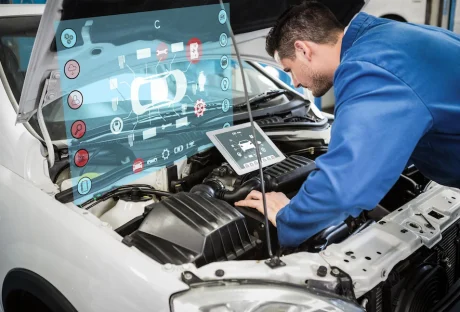The automotive industry has witnessed a significant evolution over the years, especially in the realm of vehicle safety. One of the most noteworthy advancements is in braking systems, which have evolved dramatically in newly built cars.
These advancements are particularly crucial in preventing rear-end collisions, one of the most common types of car accidents. This article delves into how modern braking systems have been developed and refined. Further, it highlights their role in enhancing road safety and reducing the frequency of rear-end collisions.
1. The Traditional Braking Systems
To appreciate the advancements in modern braking systems, it’s important to understand traditional braking mechanisms. Older vehicles typically employ hydraulic braking systems. Here, the driver’s application of the brake pedal creates hydraulic pressure in the brake lines, activating the brake pads or shoes.
While effective in their time, these systems had limitations in response time and efficiency. Particularly under sudden or emergency braking scenarios, it often leads to rear-end collisions.
2. Introduction Of Anti-Lock Braking Systems (Abs)
A significant milestone in the evolution of car braking systems was the introduction of Anti-lock Braking Systems (ABS). ABS prevents the wheels from locking up during emergency braking, thereby maintaining tractive contact with the road surface.
This technology significantly reduces stopping distances and improves vehicle control, particularly on slippery surfaces. By preventing wheel lockup, ABS allows drivers to maintain steering control, which is crucial in avoiding rear-end collisions.
3. Electronic Brakeforce Distribution (EBD) And Brake Assist
Further advancements led to the development of Electronic Brakeforce Distribution (EBD) and Brake Assist systems. EBD optimally distributes the brake force among the wheels based on road conditions and vehicle load. Thus, it enhances braking effectiveness and stability.
Brake Assist, on the other hand, detects emergency braking by monitoring the speed and force with which the driver applies the brakes. It is applied automatically to maximize braking power. This is particularly effective in reducing the severity of rear-end collisions.
4. The Rise Of Adaptive Braking Systems
The latest in braking technology is the advent of adaptive braking systems, which are part of the broader suite of Advanced Driver Assistance Systems (ADAS).
These systems use sensors to monitor the vehicle’s surroundings and can autonomously apply the brakes while detecting an imminent collision. For example, if the car ahead suddenly slows down, the system will automatically apply the brakes if it senses that the driver has not reacted quickly enough.
5. Regenerative Braking In Electric Vehicles
With the rise of electric vehicles (EVs), regenerative braking has become increasingly prevalent. This system recovers energy that is typically lost during braking and uses it to recharge the car’s battery.
While the primary purpose is to improve efficiency and range, regenerative braking also contributes to safer braking. It provides smoother and more controlled deceleration, which can be crucial in preventing rear-end collisions.
6. Impact Of Braking Systems On Driver Behavior And Safety
The evolution of these systems has not only enhanced vehicle safety but also influenced driver behavior. Modern braking systems provide drivers with a sense of security, potentially leading to more confident driving.
However, drivers need to understand that while these systems are incredibly effective, they are not infallible. Responsible driving, awareness of road conditions, and understanding the limits of these technologies are essential in maximizing their benefits in preventing rear-end collisions.
How Braking Systems Have Evolved All These Years?
The remarkable evolution of braking systems in modern vehicles is indeed a testament to the strides made in automotive safety technology. This journey, from basic hydraulic brakes to the advanced adaptive and regenerative braking systems of today, has been driven by a relentless pursuit of safety and efficiency.
Each innovation in this domain has played a significant role in mitigating the risks associated with driving, particularly in preventing the common and often dangerous rear-end collisions.
These sophisticated systems reflect the automotive industry’s deep commitment not only to enhancing vehicle safety but also to improving the overall driving experience for motorists around the world.
By incorporating these advanced braking technologies, manufacturers are ensuring that vehicles are not just faster but also more efficient. Additionally, they are safer and more reliable. However, as we embrace these technological advancements, drivers must remember that these systems are designed to augment, not replace, human judgment.
They can also never remove the principles of responsible driving. While these systems provide an added layer of safety, the onus still lies with drivers to maintain attentiveness, adhere to traffic rules, and practice safe driving habits.
Concluding Words
As we look to the future, the horizon of automotive technology is bright, with the promise of further innovations in braking systems.
These advancements might continue revolutionizing the way we drive, making roads safer and reducing the incidence of accidents. The focus on developing smarter, more intuitive braking systems will undoubtedly play a central role in this ongoing quest for enhanced road safety.
In this context, the future of automotive safety is not just about technological advancements; it is also about fostering a culture of safety among drivers, ensuring that technology and human responsibility work hand in hand to prevent accidents and save lives.
Read Also:
























